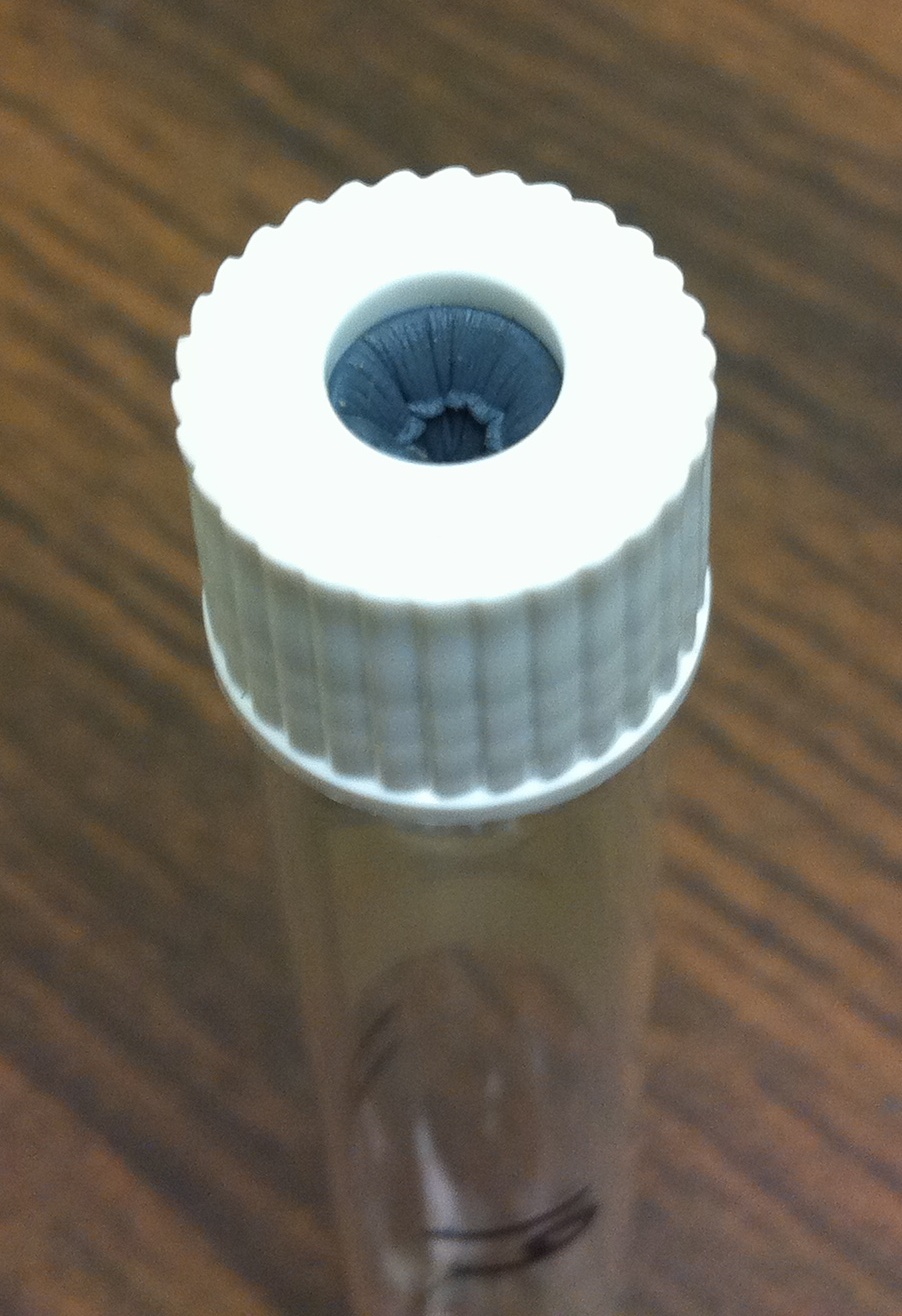Nitrogen (N2) & Nitrous Oxide (N2O) Analysis by GasBench-Precon-IRMS Tips
 1) Avoid over-tightening Exetainer caps. Vials will leak when caps are over-tightened, causing the septa to pucker and pull away from the vial. Turn caps until snug, but not so far that septa start to pucker.
1) Avoid over-tightening Exetainer caps. Vials will leak when caps are over-tightened, causing the septa to pucker and pull away from the vial. Turn caps until snug, but not so far that septa start to pucker.
2) Do not apply silicone grease, adhesives, or sealant to the tops of vials. These materials clog the autosampler needle. The process of removing these sealants increases the risk of losing your gas samples due to dislodged septa.
3) Gas vials should be free of particulate matter or slurries, as the particles will clog our autosampler needle.
So, what are all these numbers? A 15N2-15N2O Data Tutorial
The following is a brief tutorial regarding 15N2- 15N2O data from isotope distribution or isotope pairing experiments.
Mass spectrometers separate ionized molecules based on their mass-to-charge ratio (m/z). Isotope-ratio mass spectrometers are designed to separate and measure molecules that differ only in isotopic composition, also known as isotopologues. For example, isotope-ratio measurements of dinitrogen include masses 28 (14N14N), 29 (15N14N), and 30 ( 15N 15N).
The measured isotope-ratios of dinitrogen are 29/28 (29R) and 30/28 (30R). Conveniently, molecular fractions can be directly calculated from the isotope-ratios: 29N2 = 29R/(1 + 29R + 30R); 30N2 = 15R/(1 + 29R + 30R); 28N2 = 1 - (29N2 + 30N2). If you want the atomic fraction, i.e. 15N in N2, then 15N2 = [(29N2+2*30N2)/2]. The same calculations can be done for N2O by simply exchanging the N2 ratios for the 45/44 and 46/44 ratios of N2O.
The UC-Davis Stable Isotope Facility reports gas amounts in moles, which represent the sum of the three isotopologues of N2 (m/z: 28, 29, 30) or N2O (m/z: 44, 45, 46). By using the molecular fractions and molar amount of each gas, you now have everything you need to calculate the amount of each isotopic fraction (28N, 29N, 30N, 14N, or 15N). Simply multiply the total molar amount of each gas by each molecular or atomic fraction to obtain the total amount of the desired species.
Please see Stevens et al. (1993) or Hart and Myrold (1996) for further discussion of isotope distribution or isotope-pairing data.
References
Stevens, R.J., Laughlin, R.J., Atkins, G.J. & S.J. Prosser. 1993. Automated determination of nitrogen-15-labeled dinitrogen and nitrous oxide by mass spectrometry. Soil Sci. Soc. Am. J. 57:981-988.
Hart, S.C. & D.D. Myrold. 1996. 15N tracer studies of soil nitrogen transformations. pp. 225-245. In Mass Spectrometry of Soils Eds. Boutton, T.W. & A. Yamasaki. Marcel-Dekker, New York